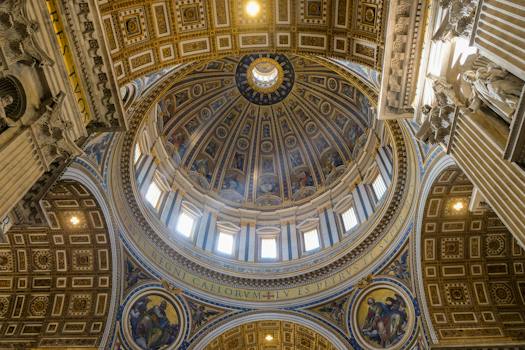

-
Table of Contents
Unveiling the Dark Legacy: Nero, The Antichrist Revisited.
Introduction
"Nero: The Antichrist Revisited" is a historical and theological examination of the controversial figure Nero, who ruled as the Roman Emperor from 54 to 68 AD. This book delves into the various theories and interpretations surrounding Nero's role as the Antichrist, a figure of evil and destruction mentioned in biblical prophecies. Through a comprehensive analysis of historical records, religious texts, and scholarly debates, the author aims to shed light on the complex and enigmatic persona of Nero, exploring the reasons behind his association with the Antichrist archetype.
Nero's Reign: Unraveling the Controversial Legacy of the Antichrist
Nero: The Antichrist Revisited
Nero's reign as the Roman Emperor from 54 to 68 AD has long been shrouded in controversy and speculation. Throughout history, he has been labeled as the Antichrist, a figure of evil and destruction. However, as we delve deeper into the historical records and examine the context of his rule, a more nuanced understanding of Nero's legacy emerges.
Nero's reign was marked by a series of tumultuous events that contributed to his negative reputation. One of the most infamous incidents was the Great Fire of Rome in 64 AD, which destroyed a significant portion of the city. Rumors quickly spread that Nero himself had ordered the fire to clear space for his grandiose building projects. While there is no concrete evidence to support this claim, it fueled the perception of Nero as a tyrant.
Another factor that contributed to Nero's controversial legacy was his persecution of Christians. In 64 AD, he blamed the Christians for the Great Fire and subjected them to brutal torture and execution. This persecution, coupled with his extravagant lifestyle and disregard for traditional Roman values, further solidified his image as a malevolent ruler.
However, it is important to consider the political climate of the time in order to fully understand Nero's actions. The Roman Empire was facing numerous challenges, both internally and externally. Nero's reign coincided with a period of political instability, economic crises, and military conflicts. In this context, his actions can be seen as attempts to maintain control and consolidate his power.
Furthermore, it is crucial to recognize that the sources of information about Nero's reign are often biased and unreliable. Many of the accounts we have today were written by his political enemies or those seeking to curry favor with his successors. These sources may have exaggerated or distorted the truth in order to tarnish Nero's reputation.
In recent years, some historians have begun to challenge the traditional portrayal of Nero as the Antichrist. They argue that his reign was not as disastrous as it has been made out to be. For example, Nero implemented several reforms aimed at improving the lives of the common people, such as reducing taxes and providing aid to the poor. He also invested in public infrastructure projects, including the construction of a new aqueduct and the expansion of the city's sewer system.
Additionally, Nero was a patron of the arts and a lover of Greek culture. He sponsored theatrical performances, poetry competitions, and athletic games, which contributed to the flourishing of the arts during his reign. This patronage of the arts has often been overshadowed by the negative aspects of his rule.
In conclusion, Nero's reign as the Roman Emperor has been the subject of much controversy and speculation. While he is often portrayed as the Antichrist, a closer examination of the historical records reveals a more complex picture. Nero's actions must be understood within the context of the political climate of the time, and the sources of information about his reign should be approached with caution. As we continue to unravel the legacy of Nero, it is important to consider the multiple perspectives and interpretations that shape our understanding of this enigmatic figure in history.
Nero's Persecution of Christians: Examining the Historical Context

Nero: The Antichrist Revisited
Nero's Persecution of Christians: Examining the Historical Context
In the annals of history, few figures have been as reviled as Nero, the infamous Roman emperor who ruled from 54 to 68 AD. One of the most notorious aspects of his reign was his persecution of Christians, which has been the subject of much debate and speculation over the centuries. To truly understand the motivations behind Nero's actions, it is crucial to examine the historical context in which these events took place.
During Nero's reign, the Roman Empire was undergoing a period of significant social and political upheaval. The empire was expanding rapidly, and with it came a clash of cultures and religions. Christianity, a relatively new and rapidly growing faith, posed a challenge to the traditional Roman religious order. The Romans were a deeply religious people, and any threat to their established beliefs was met with suspicion and hostility.
Nero himself was a complex and enigmatic figure. He was known for his extravagant lifestyle and erratic behavior, which often included acts of cruelty and violence. However, it is important to note that his persecution of Christians was not an isolated incident but rather part of a broader pattern of repression and control. Nero sought to consolidate his power and maintain social order by suppressing any dissenting voices, including those of the Christians.
The Great Fire of Rome in 64 AD played a pivotal role in Nero's persecution of Christians. The fire, which destroyed a significant portion of the city, was initially blamed on Nero himself. In an attempt to deflect blame, Nero accused the Christians of starting the fire and used this as a pretext to unleash a wave of persecution against them. This event marked a turning point in the relationship between the Roman state and the Christian community.
The persecution of Christians under Nero was brutal and far-reaching. Christians were subjected to torture, imprisonment, and public execution. They were scapegoated and demonized, accused of practicing immoral and subversive rituals. Nero's persecution was not limited to Rome but extended throughout the empire, as he sought to eradicate the Christian faith entirely.
It is important to note that Nero's persecution of Christians was not solely motivated by religious intolerance. It was also a means of consolidating his power and diverting attention away from his own failings as a leader. By scapegoating the Christians, Nero was able to deflect blame for the social and economic problems facing the empire onto a marginalized and vulnerable group.
The persecution of Christians under Nero had a profound impact on the early Christian community. It forced them to go underground, practicing their faith in secret and facing constant danger. However, it also served to strengthen their resolve and commitment to their beliefs. The martyrdom of early Christians became a powerful symbol of faith and resistance, inspiring future generations to stand firm in the face of persecution.
In conclusion, Nero's persecution of Christians was a complex and multifaceted phenomenon. It cannot be understood in isolation but must be examined within the broader historical context of the Roman Empire. Nero's actions were driven by a combination of religious intolerance, political expediency, and a desire to maintain control. The persecution of Christians under Nero had a lasting impact on the early Christian community, shaping their identity and inspiring future generations to endure in the face of adversity.
Nero's Death and the End of an Era: Exploring the Aftermath of his Rule
Nero's Death and the End of an Era: Exploring the Aftermath of his Rule
The death of Nero marked the end of an era in Roman history. After ruling for fourteen tumultuous years, his demise left a power vacuum that would have far-reaching consequences for the empire. Nero's reign was marked by controversy, excess, and tyranny, and his death only intensified the chaos that had plagued Rome during his rule.
Following Nero's suicide in 68 AD, the Roman Empire was thrown into a state of uncertainty. The Senate, eager to restore stability, quickly appointed Galba as the new emperor. However, Galba's reign was short-lived, as he was assassinated just seven months later. This pattern of instability continued for the next year, with three more emperors rising and falling in quick succession.
The chaos that ensued after Nero's death was a direct result of his tyrannical rule. Nero's extravagant lifestyle and disregard for the welfare of his people had left the empire in a state of disarray. The economy was in shambles, and the once-mighty Roman legions were demoralized and weakened. The people of Rome had grown tired of Nero's excesses and were eager for change.
The death of Nero also had profound implications for the arts and culture of Rome. During his reign, Nero had fancied himself a great patron of the arts, but his taste was often questionable. He had a penchant for grandiose and extravagant spectacles, which drained the treasury and alienated many of Rome's intellectuals. With his death, the artistic community hoped for a return to more refined and sophisticated cultural pursuits.
The aftermath of Nero's rule also saw a shift in the political landscape of Rome. The Senate, which had been largely marginalized under Nero's autocratic rule, sought to reassert its authority. The appointment of Galba as emperor was seen as a step towards restoring the power of the Senate, but his assassination dashed those hopes. The subsequent rise and fall of three more emperors further destabilized the political situation, leaving Rome in a state of uncertainty.
The death of Nero also had significant implications for the future of the Roman Empire. The chaos that followed his demise set the stage for the Year of the Four Emperors, a period of intense civil war and political upheaval. This power struggle would ultimately lead to the rise of the Flavian dynasty, with Vespasian emerging as the victor. Under the Flavians, Rome would experience a period of relative stability and prosperity, marking a turning point in its history.
In conclusion, the death of Nero marked the end of an era in Roman history. His tyrannical rule had left the empire in a state of chaos and instability, and his demise only intensified these problems. The aftermath of his rule saw a shift in the political landscape, with the Senate seeking to reassert its authority. It also had profound implications for the arts and culture of Rome, as the artistic community hoped for a return to more refined pursuits. Ultimately, the death of Nero set the stage for the Year of the Four Emperors and the rise of the Flavian dynasty, marking a turning point in the history of the Roman Empire.
Q&A
1. Who was Nero?
Nero was a Roman emperor who ruled from 54 to 68 AD.
2. Why is Nero often associated with being the Antichrist?
Nero is often associated with being the Antichrist due to his brutal persecution of Christians and his tyrannical rule.
3. What evidence supports the idea that Nero was the Antichrist?
The idea that Nero was the Antichrist is primarily based on biblical interpretations, particularly the Book of Revelation, which some believe contains prophecies about Nero's reign.
Conclusion
In conclusion, the idea of Nero being the Antichrist has been revisited and debated by scholars and historians. While some argue that Nero fits the characteristics of the Antichrist described in biblical texts, others believe that the identification is based on speculation and historical interpretation. The debate surrounding Nero as the Antichrist continues to be a topic of interest and discussion among researchers.












